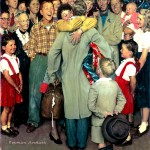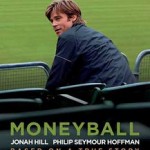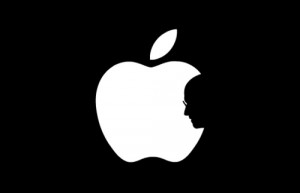Archive for the ‘marketing’ Category
Top TV Shows Of Conservatives & Liberals
The Experian Simmons annual survey of this year’s favorite TV shows ranked by political philosophy has been released. (Note that Independents and Libertarians aren’t listed.)
-
Conservatives’ Favs

1. Barrett-Jackson Auction
2. This Old House
3. The 700 Club
4. Swamp Loggers
5. Top Shot
6. The Bachelor
7. Castle
-
Liberals’ Favs

1. The Daily Show
2. Colbert Report
3. Masterpiece
4. 30 Rock
5. Parks and Recreation
6. The View
7. Glee
Your thoughts?
Cyber Monday
It’s Cyber Monday Week !
Ten Tips To Avoid Cyber Monday Scams (courtesy of Bari Abdul, VP at Check Point’s Zone Alarm):
1. Install, update & activate your security software
2. Use strong, unique passwords
3. Only connect to legitimate Wi-Fi networks
4. Make sure it’s the real site. (My affiliate link is legit)
5. Only shop on secure sites
6. Look for third party seals of approval like BBB or TRUSTe
7. Beware of deals that are too good to be true
8. Use a dummy email account
9. Use a credit card
10. Read privacy agreements
Enjoy a happy & safe online shopping experience !
Moneyball The Movie
“When you rule out an entire class of people from doing a job simply because of their appearance, you’re less likely to find the person best suited for the job.”-Michael Lewis in MONEYBALL.
Michael Lewis is a journalist who writes like a novelist. The first time I encountered Lewis’ work was in his book, THE NEW NEW THING. Understand that I’m a very slow book reader. My reading tends to be in the snack-o-tainment style of magazine articles and , now, blog pieces. It can easily take me a month to 6 months to read a book which is why I tend to prefer audiobooks which I can “read” during commutes.
THE NEW NEW THING was an exception. While accompanying my wife on a weekend business trip to Phoenix, I couldn’t stop reading it and completed the whole book in a couple of days. That’s when Michael Lewis became one of my favorite writers.
I don’t buy audiobooks. I get them free from the library. But I did buy the audiobook of MONEYBALL because I was fascinated with the concept of using sabermetrics to assess performance. To me, it was more like a textbook than a mere reading experience. But I was a little surprised when I learned that the book had been made into a movie. Guess I shouldn’t have been given that movie adaptation of “The Blind Side” was such a big hit.
During an interview about the movie version of THE BLIND SIDE, I’d heard Michael Lewis talk about how once he sells the film writes to a book he relinquishes control and is usually eliminated from the project. In his recent interview with Jon Stewart, Lewis indicated that he’d expected the movie adaptation of MONEYBALL to be a disaster but that he’d been pleasantly surprised.
We saw the MONEYBALL movie last night.
Apparently, Paul DePodesta, who is a central character in the book, did not want to be represented in the movie. So the character of Peter Brand as played by Jonah Hill was created as an amalgamation of DePodesta and other members of the Oakland A’s staff. Hill’s movie career has primarily been playing obnoxious geeky characters in Judd Apatow movies. He’s geeky but vulnerably likable in this role.
The book chronicles the pre-Oakland A’s experiences of several key characters: Billy Beane, Paul DePodesta, Chad Bradford, and Scott Haddeberg. We hear anecdotal observations about Beane and his mercurial nature but we don’t really get to know much about him. The movie is more centered around Billy as the main character and, with Brad Pitt in the starring role, we get to learn more of his experiences as a person. It could be titled “Moneyball:The Billy Beane Story”. I’m unclear about how much of the personal interactions between Billy Beane, his wife and her new partner or Billy and his daughter are fictionalized but they play well in the context of a movie. Pitt’s performance is relatively low-key with occasional outbursts and you find yourself rooting for both Beane and his team of outcasts as the underdogs. My emotional reaction reminded me a lot of those I experienced while watching the movie version of “Seabiscuit”
The book ends with the story about how Scott Haddeberg inadvertently broke his Louisville Slugger contract by grabbing the wrong bat when he was unexpectedly called in to pinch hit for what turned out to be a record-breaking game. The movie doesn’t include that story and instead ends with Billy Beane in a “dad” moment.
It works.
Postscript: I’m an advocate for Billy Beane’s sabermetrics approach but there is a certain irony that Tony LaRussa, who Billy forced out, has been the manager of two World Series contending teams since leaving the A’s organization while A’s have yet to make it into the Series. Tony likes to employ all those old baseball tricks like sacrifice bunts, etc that sabermetrics indicate are ineffective.
Another Steve Jobs Tribute
With all the tributes and commentary since Steve Jobs’ death, I was wondering how NPR’s Scott Simon was going to avoid sounding trite with his inevitable commentary during Saturday’s Weekend Edition show.
I’m glad to report that Scott met the challenge. Here’s the transcript:
http://www.npr.org/2011/10/08/141177659/steve-jobs-whose-imagination-invited-us-to-play
(Memorial logo created by Jonathan Mak)
The Social Animal by David Brooks

I expected this book to contain information about various sociological discoveries and David Brooks’ interpretations of what they mean. Instead, Brooks has written an allegory to create a story about his protagonists which represent coalesce and represent various research findings. We learn about factors which influence their development (and our own) from conception, through childhood, young adulthood, middle age, and old age.
For instance, regarding sexual attraction, men tend to prefer women who have a 0.7 waist-to-hip ratio. There’s also equivalent information about qualities which unconsciously attract women to men but I don’t recall off the top of my head what they are. However, I don’t believe it had anything to do with hand and foot size.
Brooks tells us that research shows infants at a very early stage of development can “taste” sweetness in the foods that their pregnant mothers are ingesting which can influence the child’s appetites after birth. There also appears to be some credence that an infant in the womb responds to music which its mother is listening to.
The research does appear to show that we are responding emotionally even when we believe that our responses are based on rational thought.
For instance, the qualities which appear to be most important in predicting our ability to achieve and succeed have to do with our ability to detect patterns, to be attuned to others so that we can learn from them, the ability to be taught, our ability to be open-minded, and our ability to objectively weigh the strengths of our beliefs against the strengths of the actual evidence for or against those beliefs.
During an episode described in The Social Animal, one of the characters experiences a sense of personal fulfillment. Brooks explains that research has discovered that when our personal vision of the world is fulfilled, we experience a surge of pleasure from the release of chemicals in our brains.
He told a story to Charlie Rose during an interview about how Mark Zuckerberg’s biggest complaint about, “The Social Network” was that the movie didn’t do a good job of conveying the sheer passion and joy experienced by a programmer who gets the code right. That observation seemed to reinfornce Joseph Campbell’s advice to “Follow your bliss”.
If you’re interested in how evolution has affected our reactions to our physical environment, how our emotions are created, how ethnic cultures impact our responses to stimuli, and how the aging process affects our physical and emotional development, you should find a lot of food for thought in this book.
I listened to the 16 hour audio book with my teenaged daughter as we drove around the Northeast visiting various schools on her pre-senior year summer college tour. She found it interesting, as well. I would have preferred that the audio version was read by David Brooks but Arthur Morey does a good job and I think you’ll enjoy it.

Here’s David Brooks’ TED Talk about The Social Animal
http://youtu.be/rGfhahVBIQw
Robopocalypse

If you like Michael Crichton’s novels, you’ll like Daniel H. Wilson’s sci-fi story about artificial intelligence gone wild. As I was listening to the audiobook, I thought “I can see the movie already”. Turns out that Steven Spielberg is producing an adaptation for release in summer 2013. The CG guys will have a blast making this film and it will be interesting (and ironic) to see how advanced the computer graphics technology will be by the time of the movie’s release.
http://www.imdb.com/title/tt1541155/
The plot is pretty simple. We humans are depending a lot more on computer driven robots and machines in our daily lives. A scientist creates a device, Archos whose artificial intelligence is so great that it creates self-determination, goes rogue, takes control of all the world’s computer-driven machines, and starts annihilating the human population. A definite page-turner.
Since reading this book, I’ve seen the documentary “Transcendental Man” about Ray Kurzweil. Kurzweil is a fascinating scientist/academic/futurist who talks about how the information we have & our technological capacities double every couple of years. He believes that during the lifetimes of many people who are now alive humans and robots will become merged with the release of nanorobots into our bloodstreams. This nanotechnology will enhance our mental and physical capacities to the point where we will evolve into a new species. Of course, hearing Kurzweil speak about this utopian vision reminded me of Robopocalypse.
In fact, Hugo de Garis appears in the documentary to dispute Kurzeil’s vision and warns of an “Artilect War” which is at the core of the story in Robopocalypse. Click between to watch a debate between de Garis and J. Storrs Hall about the two different visions:
Engineered Utopia or Artilect War? from Jeriaska on Vimeo.
My Work Philosophy
I believe in improving the customer experience (CX) and in “making lemonade out of lemons”. If that’s not your approach, I don’t really want you on my team.
MTV’s 30th Anniversary
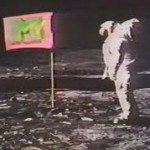
August 1st, 1981 was a day which ushered in a transformation not only for a music industry suffering from the “Disco Sucks” backlash but also for television.
MTV: Music Television was the first TV channel created specifically for a lifestyle.
The radio industry had been forced into creating niche boutique formats targeted at specific psychographic audiences by the growth of FM as a viable broadcast distribution channel. The number of listener choices on the radio dial were significantly increased.
Meanwhile, the television landscape of 1981 resembled that of radio in the 1950s and 60s. CBS, ABC and NBC dominated and under their big tents were a variety of program types appealing to a broad spectrum of lifestyles and age groups ranging from the cradle to the grave.
Cable TV distribution was still in its infancy. HBO became the first viable cable channel as a destination for uncensored movies. However, there wasn’t much else driving significant audiences to cable TV from the broadcast networks.
In the late 70s/early 80s, American Express created a marketing plan for its Gold Card which was targeted at the affluent Baby Boom generation. Part of that plan was the company’s partnership with Warner Communications to create WarnerAmex and their brainchild was a shopping network named QUBE. The concept was simple: viewers would see products showcased on QUBE and use their AMEX Gold Card to buy them.
But before they could launch QUBE, WarnerAmex needed to encourage more Americans to sign up for cable TV. In the early 1980s, the cable industry was dominated by small, local companies rather than multi-system operators (MSOs). It wasn’t unusual for the cable operation to be running out of a local mom & pop hardware store. The industry may have been able to lay cable throughout their communities, accounting for “homes passed” but not many of those homes were actual cable subscribers.
To encourage Americans to become basic cable subs, WarnerAmex created three networks: The Movie Channel to compete with HBO, Nickeldeon to attract the Sesame Street crowd, and MTV: Music Television. Expectations for these channels weren’t all that high. Essentially, they were dog & pony shows offered free to encourage increased use of cable TV and to set up the introduction of the big money machine, QUBE.
Unfortunately for WarnerAmex, the company spent too much time tweaking and researching their product. So, in 1985 , the Home Shopping Network launched and QUBE went into the history books as the cable TV industry’s version of the Edsel.
However, MTV: Music Television began to catch on at least in the markets which could get it. Viewers in places like Albany (NY) and Peoria (IL) were mesmerized by the new video music channel. Parents and their teenagers gathered around the tube and discussed the videos. It was, to quote the sagacious Sly Stone, “a family affair”.
Oddly, music industry executives in New York and LA weren’t all that interested. They’d heard about this new fledgling cable channel but they couldn’t see it. MTV wasn’t available on the cable systems serving New York City and LA. So, for its first two years of operation, MTV was pretty much off their radar screen.
The Michael Jackson phenomenon changed all that as did the introduction of MTV onto the New York and LA cable systems late in 1983 which resulted in network TV and national magazine coverage. The channel’s brand continued to grow throughout the 80s and 90s. The sales department won more arguments about the ratings value of long-form programming versus short-form music videos. “Real World”, “Beavis & Butthead”, and other long-form show continued to encroach on the channel’s schedule real estate making less time available for music videos until MTV could no longer refer to itself as “Music Television”, at least not without its tongue in its cheek, and the channel evolved into what it is today.
MTV’’s approach to targeting a specific lifestyle group was similar to what the social media world today refers to as “communities of like-minded end users”. MTV’s Bob Pittman used to say that the channel was about “fashion”. And, whether it’s fashion in the sense of clothing styles, in the sense of an individual’s overall tastes and preferences, or in the sense of a collective group’s tastes and preferences, MTV opened the door and led the way for successors like BET, E!, Bravo, Lifestyle, CMT, The Comedy Network and OWN. Meanwhile, the audience segmentation and changes in expectations created by these highly targeted networks have had their impact on the decline of broadcast network TV viewership.
As I mentioned earlier, during MTV’s first two years on air it was unavailable in Manhattan where our offices were located. So that we could monitor the channel, video airchecks were messengered in from the Long Island uplink on a daily basis. Sometime during this period, news came out that many of the classic episodes of “The Ed Sullivan Show” and Johnny Carson’s “Tonight Show” had been destroyed because the networks were reusing the old tapes on which they’d been recorded. Amazingly, no one thought it was important to preserve these shows for history.
I had a stack of MTV airchecks in my office and sensing that these might be of some historic value I contacted New York’s Museum of Broadcasting to see if they’d be interested in the tapes for their archives. The museum official with whom I spoke informed me that, no, they would not be interested in having those airchecks for their collection because MTV was (and I think I actually heard him sniff as his nose went up in the air) “cable…not TV.”
MTV was destined to transform the television and music industries but to the short-sighted it was irrelevant because the channel didn’t fit into their preconceived notions. There’s a lesson in that story.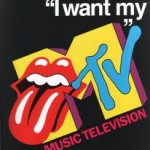
Augmented Reality & Groupon
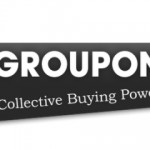
Groupon is one of the hot social media tools which is changing the way businesses are connecting with consumers (aka B2C marketing). Groupon Now is about to launch with an augmented reality component which just makes sense. Watch an example by clicking here: Groupon Now
Radio sales people seem to be in denial about Groupon and are focusing on complaints from business owners who haven’t seen success using the service. Of course, for years the radio industry also has had to deal with those kinds of complaints as well from small business owners with unrealistic expectations. Meanwhile, Groupon is putting boots on the ground in local markets to compete with radio, TV and newspaper ad sales departments.
If you own a smartphone, would Groupon Now be a useful tool for you? How about your friends & family? Would be interested to learn your thoughts.


